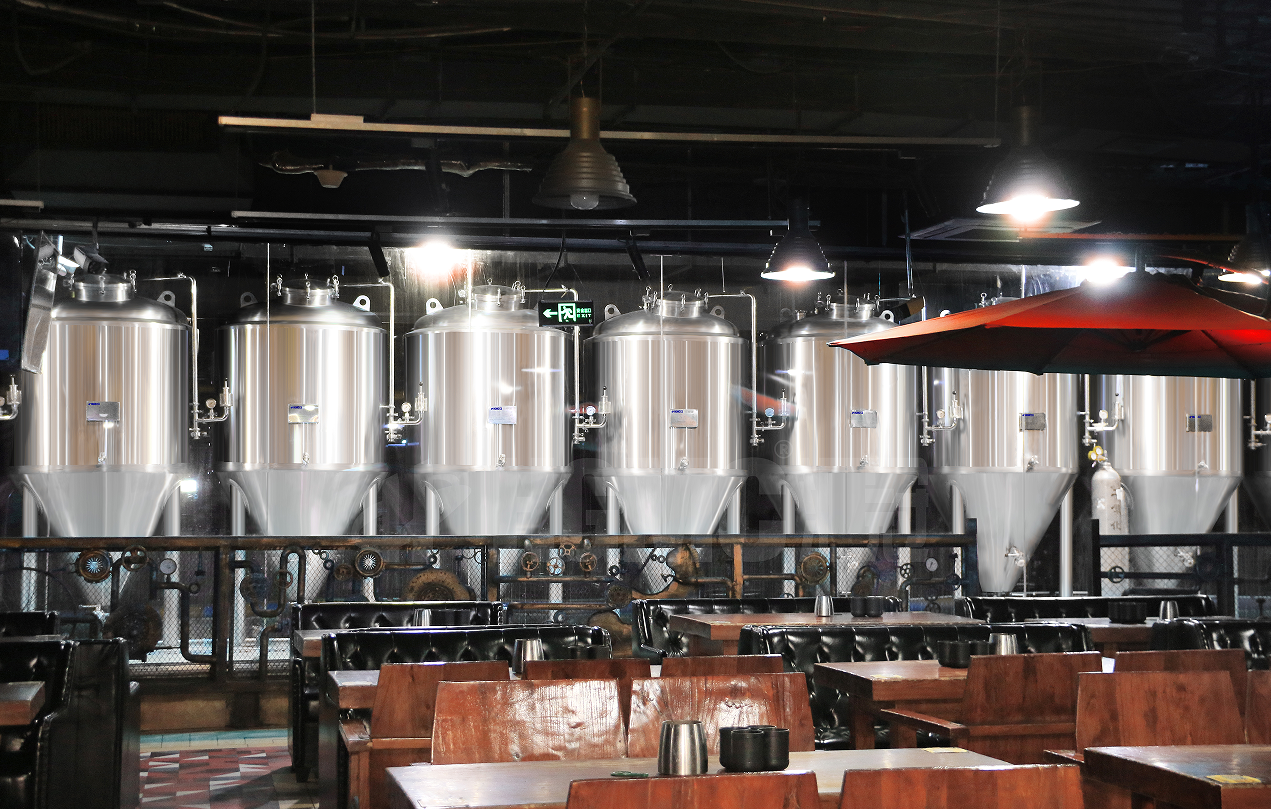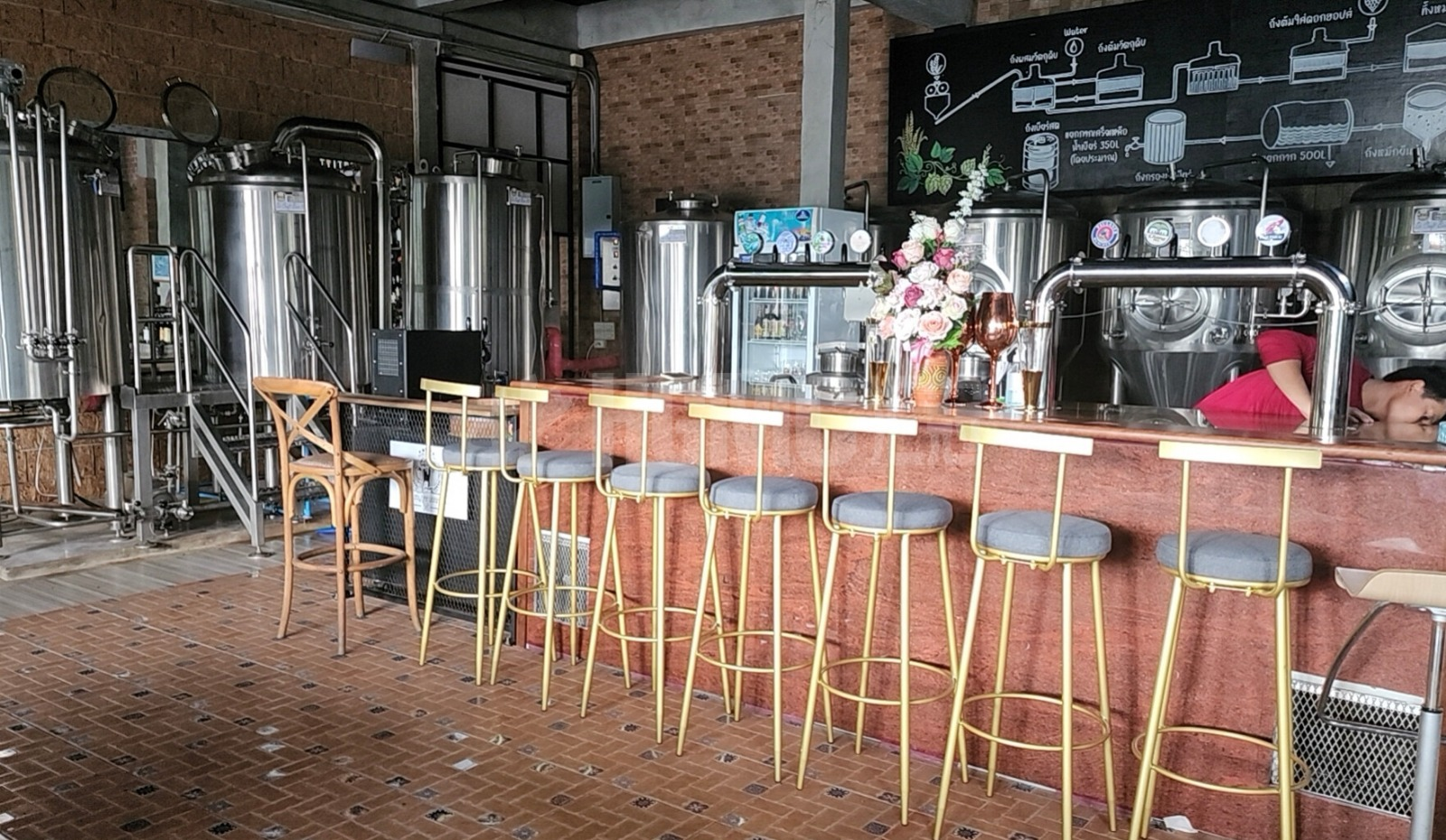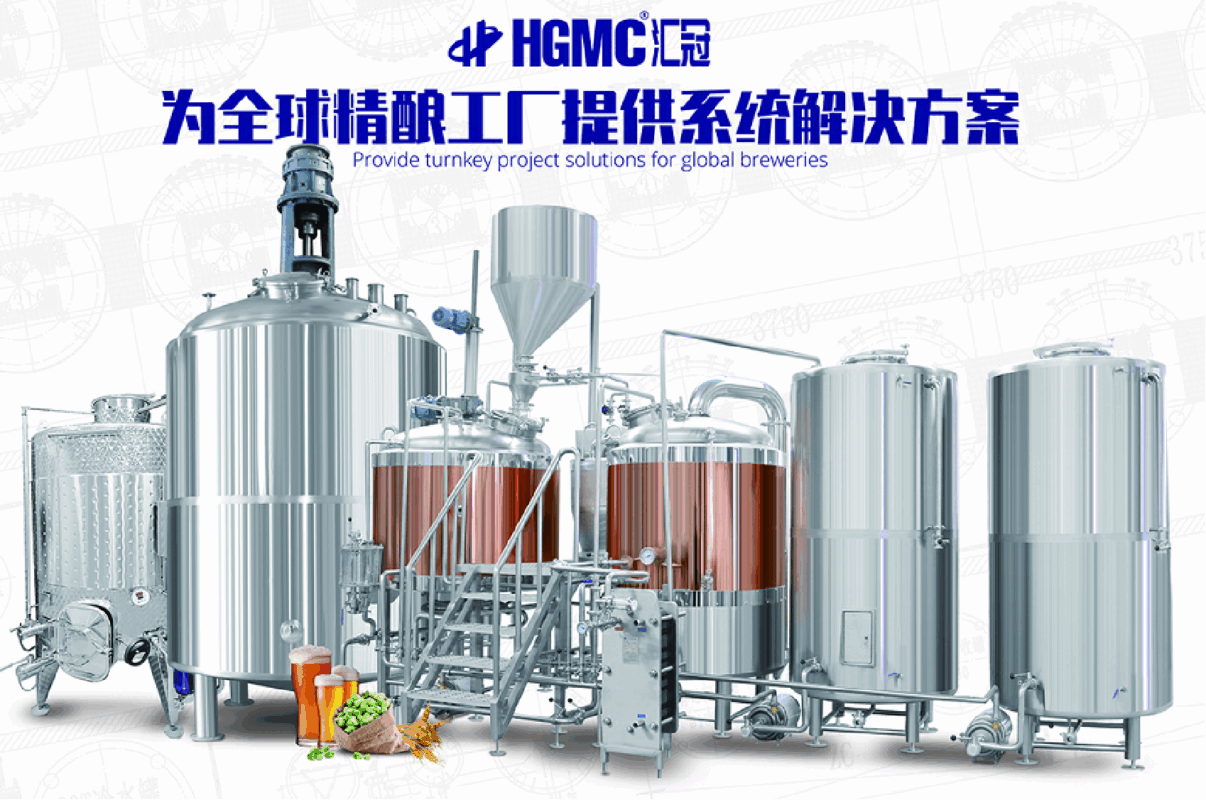Introduction to Modern Beer Brewing Systems
The art of brewing beer has evolved dramatically from traditional small-scale operations to sophisticated manufacturing processes that combine time-honored techniques with cutting-edge technology. At the heart of this transformation lies beer production equipment—the unsung hero behind your favorite pint. Whether you’re an aspiring craft brewer looking to launch your own brand or an established brewery seeking to upgrade your capabilities, understanding beer production equipment is fundamental to creating exceptional beverages that stand out in today’s competitive market.
Modern beer production equipment encompasses everything from initial mashing and boiling to fermentation, filtration, and packaging. The quality, precision, and technological integration of this equipment directly impact not only the efficiency of your operations but also the consistency, flavor profile, and marketability of your final product. Among the numerous manufacturers in this space, HGMC has emerged as a pioneering force, developing systems that address the specific challenges and opportunities facing today’s brewers.
This comprehensive guide will walk you through the essential components of beer production systems, highlight the innovative features of HGMC equipment, and provide practical insights to help you select the right technology for your brewing ambitions. By understanding the capabilities of modern brewing equipment, you can make informed decisions that enhance your production quality, scale your operations effectively, and ultimately brew better beer.

The Anatomy of Beer Production Equipment: Key Components and Functions
Beer production is a complex biochemical process that requires specialized equipment at each stage. Understanding these components helps brewers make informed decisions about their setup and investments.
1. Raw Material Storage and Preparation Equipment
The journey of beer begins with raw materials—malt, hops, water, and yeast. Proper storage and handling systems are crucial for maintaining ingredient quality. This includes silos and storage tanks for malt and other grains, temperature and humidity control systems to preserve freshness, and conveying systems to transport grains to the preparation area. The preparation phase typically involves mills and crushers which grind the malt to expose the starchy interior without pulverizing the husks, creating the ideal grist for mashing.
2. Wort Production: The Heart of Brewing Equipment
Wort production is where the magic begins, and this stage requires some of the most specialized equipment in the entire brewing process.
-
Mash Tuns: These vessels mix crushed malt with hot water in a process called mashing, which converts grain starches into fermentable sugars. Modern mash tuns like those in HGMC systems feature precise temperature control systems and efficient mixing mechanisms to ensure optimal sugar extraction.
-
Brew Kettles: After mashing, the liquid wort is separated from the grain solids and transferred to the brew kettle where it is boiled. During boiling, hops are added for bitterness, flavor, and aroma. HGMC’s advanced brew kettles incorporate energy-efficient heating systems and anti-oxidation mixing technology to preserve wort quality while reducing operational costs.
-
Whirlpool Tanks or Settling Tanks: After boiling, the wort is transferred to a whirlpool tank where hop particles and coagulated proteins are separated through centrifugal force. This clarification step is essential for producing clear, bright wort ready for fermentation.
The HGMC steam-heated mashing system exemplifies modern wort production technology, featuring dual-layer stirring mechanisms that prevent vortex formation and oxygen uptake, integrated jacket heating systems for precise temperature control, and efficient steam condensation units that maintain a clean working environment .
3. Fermentation and Maturation Equipment
Once the wort is prepared and cooled, it’s transferred to fermentation vessels where yeast is added. Fermenters are perhaps the most critical equipment in determining final beer character, as they control the environment where yeast converts sugars to alcohol and CO₂ while producing flavor compounds.
Modern fermenters like those from HGMC feature:
-
Precise temperature control systems for different fermentation profiles
-
CIP (Clean-in-Place) systems for automated cleaning and sanitation
-
Pressure control capabilities for specific beer styles
-
Yeast collection and harvesting systems for reuse
After primary fermentation, many beer styles require a maturation period where flavors mellow and harmonize. Conditioning tanks similar to fermenters but often designed for colder temperatures facilitate this process.
4. Filtration and Clarification Systems
While some beer styles are naturally cloudy, most commercial beers undergo filtration to achieve brilliant clarity and biological stability. Filtration systems range from traditional depth filters using diatomaceous earth to modern membrane filters that can achieve sterile filtration without stripping flavor. HGMC’s expertise in filtration technology ensures gentle handling of beer while achieving the desired clarity and stability.
5. Packaging Lines: Bottling, Canning, and Kegging
The final stage of beer production involves transferring the finished product into containers for distribution and sale. Packaging equipment includes:
-
Bottling lines with bottle cleaners, fillers, cappers, and labelers
-
Canning lines increasingly popular for their convenience and light-blocking properties
-
Kegging systems for draft beer distribution
-
Pasteurization equipment for stabilized products requiring extended shelf life
Each packaging format requires specialized equipment, and many breweries operate multiple packaging lines to serve different market segments.

HGMC Beer Production Equipment: Technological Excellence in Brewing
HGMC has established itself as a leader in brewing technology by developing systems that address the core needs of modern brewers: efficiency, consistency, scalability, and quality. Their equipment incorporates thoughtful engineering and advanced automation that benefits both production outcomes and operational economics.
Advanced Mashing and Boiling Systems
HGMC’s steam-heated mashing systems represent a significant advancement in wort production technology. The double-layer stirring mechanism prevents oxygen uptake during mixing—a crucial factor in preventing oxidation and preserving beer freshness. The built-in jacket heating system provides precise control over mashing and boiling temperatures, ensuring optimal enzyme activity during mashing and controlled boil intensity during hopping.
The unique bottom cone design of HGMC vessels promotes more effective wort circulation, creating a natural rolling motion that improves hop utilization and thermal efficiency without requiring excessive energy input. These design features collectively contribute to higher quality wort, the foundation of excellent beer.
Energy Efficiency and Environmental Considerations
Modern breweries face increasing pressure to reduce their environmental footprint while maintaining profitability. HGMC equipment addresses this challenge through several innovative features:
-
Energy Recovery Systems: Some HGMC configurations incorporate heat exchangers that capture thermal energy from hot wort and reuse it to preheat incoming water or other process streams, significantly reducing energy consumption.
-
Steam Condensation Technology: The efficient secondary steam atomization and condensation units in HGMC systems prevent the release of volatile organic compounds and steam into the working environment, maintaining cleaner air quality in the brewhouse .
-
Water Reduction Features: With water efficiency becoming increasingly important, HGMC systems are designed to minimize water consumption through optimized rinsing cycles, cleaning systems that require less water, and processes that recover and reuse water where appropriate.
These sustainability features not only benefit the environment but also improve the bottom line through reduced utility costs—a crucial consideration in today’s competitive brewing landscape.
Automation and Control Systems
Consistency is paramount in commercial brewing, and HGMC delivers this through advanced automation. Their systems typically feature Programmable Logic Controller (PLC) systems that allow brewers to precisely control and repeat every aspect of the brewing process .
The automation capabilities extend beyond basic process control:
-
Recipe Management: Store and execute precise brewing recipes with consistent parameters
-
Process Monitoring: Real-time tracking of temperatures, pressures, flow rates, and other critical variables
-
Remote Operation: Some systems allow monitoring and adjustment of processes from remote locations
-
Data Logging: Comprehensive recording of process data for quality control, troubleshooting, and regulatory compliance
This level of automation reduces the potential for human error, ensures batch-to-batch consistency, and allows brewers to focus more on creativity and quality improvement rather than manual process control.
Scalable Solutions for Different Operation Sizes
HGMC understands that brewing operations come in all sizes, from compact microbreweries to large production facilities. Their product range reflects this diversity, offering systems with capacities ranging from small-scale 300L units to commercial-scale 1000L+ systems .
This scalability means that brewers can select equipment matched to their current production needs while planning for future expansion. The modular design of many HGMC systems facilitates relatively straightforward capacity increases as business grows, protecting initial equipment investments while supporting long-term growth strategies.
Selecting the Right Beer Production Equipment: Key Considerations
Choosing appropriate brewing equipment is one of the most significant decisions a brewer will make. This selection impacts not only the quality of the beer produced but also operational efficiency, production capacity, and business viability. Several factors should guide this important decision.
Production Volume and Growth Projections
Your equipment selection should align with both current production needs and realistic growth projections. Consider not only your initial batch sizes but also how many batches you can realistically produce within your available time and space constraints. HGMC offers systems with various capacities, from 300L to 1000L per batch, allowing brewers to select equipment that matches their specific volume requirements .
A common mistake among new brewers is selecting equipment that’s either too small, immediately constraining business growth, or too large, resulting in underutilized capacity and strained finances. Carefully analyze your market, distribution channels, and sales projections before determining the ideal equipment size.
Available Space and Facility Constraints
Brewing equipment requires significant space, not only for the primary vessels but also for ancillary systems, raw material storage, finished product storage, and operational access. Before selecting equipment, carefully measure your available space and consider ceiling height, door access, utility connections, and workflow patterns.
HGMC’s compact and modular designs can be particularly advantageous in space-constrained environments. Some configurations arrange vessels vertically or incorporate shared foundations to minimize footprint while maintaining functionality.
Utility Requirements and Limitations
Brewing is utility-intensive, requiring substantial water, energy, and sometimes steam or compressed air. Before selecting equipment, verify that your facility can provide the necessary utilities or budget for upgrades.
Key utility considerations include:
-
Electrical capacity for heating, pumps, and control systems
-
Water supply volume and quality
-
Drainage capacity for wastewater
-
Gas service if using direct-fired systems
-
Compressed air for automation and packaging
HGMC offers equipment with various heating options, including electric, steam, and direct fire, providing flexibility to match available utility infrastructure .
Automation Level and Labor Requirements
The degree of automation significantly impacts both initial investment and ongoing labor costs. While fully automated systems command higher upfront costs, they may reduce long-term labor expenses and improve consistency.
Consider your technical comfort level, available staffing, and tolerance for manual processes when selecting equipment. HGMC systems offer flexibility in automation, with options ranging from manual control to fully automated PLC-based systems that can manage entire brewing cycles with minimal intervention .
Budget and Financing Options
Quality brewing equipment represents a substantial investment. When budgeting, consider not only the equipment purchase price but also installation costs, utility upgrades, and initial raw material inventory.
HGMC equipment is positioned as offering competitive pricing while maintaining high quality standards . Some suppliers offer financing options or phased implementation approaches that can make equipment acquisition more accessible to emerging brewers.
Service, Support, and Warranty Considerations
Brewing equipment operates in demanding conditions and will inevitably require maintenance and occasional repairs. When selecting equipment, consider the manufacturer’s reputation for quality, availability of spare parts, technical support responsiveness, and warranty terms.
HGMC backs its equipment with comprehensive support, including one-year free replacement parts and online technical support for purchased systems . This support infrastructure provides valuable peace of mind, particularly for brewers without extensive technical teams.
The Future of Beer Production Equipment: Emerging Trends and Innovations
The brewing equipment industry continues to evolve, driven by technological advancements, changing consumer preferences, and growing sustainability imperatives. Several trends are shaping the next generation of beer production equipment.
Energy Efficiency and Sustainability
With energy costs rising and environmental concerns growing, brewers are increasingly seeking equipment that minimizes resource consumption. Future brewing systems will likely incorporate more advanced heat recovery, water recycling, and alternative energy integration. HGMC’s steam condensation technology represents a step in this direction, capturing and reusing thermal energy that would otherwise be wasted .
Digitalization and Industry 4.0
The integration of digital technologies continues to transform brewing equipment. We’re seeing increased connectivity, data analytics, and remote operation capabilities. Modern systems like those from HGMC with PLC controls form the foundation for these digital breweries, collecting operational data that can be analyzed to optimize processes, predict maintenance needs, and improve overall efficiency .
Flexibility and Multi-Purpose Systems
As consumer tastes diversify, brewers need equipment that can produce a wider variety of beer styles and even other beverages. Equipment that allows quick changeovers between products, accommodates different ingredients, and supports various process parameters provides competitive advantage. HGMC’s temperature-controlled fermentation systems and configurable brewhouses offer this type of flexibility, enabling brewers to respond quickly to market trends.
Compact and Modular Designs
Urban brewing and space constraints are driving demand for more compact, efficient equipment layouts. Modular systems that can be expanded as business grows offer particular appeal to developing breweries. HGMC’s skid-mounted and vertically arranged configurations address this need for space-efficient designs without compromising capability.

Conclusion: Brewing Excellence with HGMC Beer Production Equipment
Selecting the right beer production equipment is a critical decision with far-reaching implications for product quality, operational efficiency, and business success. HGMC brewing systems offer a compelling combination of technological innovation, practical design, and proven performance that can benefit brewers at various scales.
From the precise temperature control of their mashing systems to the energy-efficient boiling technology and advanced automation options, HGMC equipment incorporates features that address the real-world challenges faced by modern brewers. The company’s commitment to quality is evident in details like the stainless steel construction, advanced stirring mechanisms that prevent oxidation, and efficient condensation systems that improve working conditions .
Perhaps most importantly, HGMC understands that brewing is both a science and an art. Their equipment provides the precision and consistency required for commercial production while allowing the creativity and experimentation that define great brewing. Whether you’re establishing your first professional brewery or expanding an existing operation, HGMC systems offer the reliability, efficiency, and quality necessary to compete in today’s dynamic beer market.
The journey from raw ingredients to finished beer involves complex biochemical processes, but with the right equipment, these processes can be managed consistently and efficiently. By investing in quality brewing equipment from respected manufacturers like HGMC, brewers can focus on what truly matters: creating exceptional beers that delight consumers and build lasting brands.

